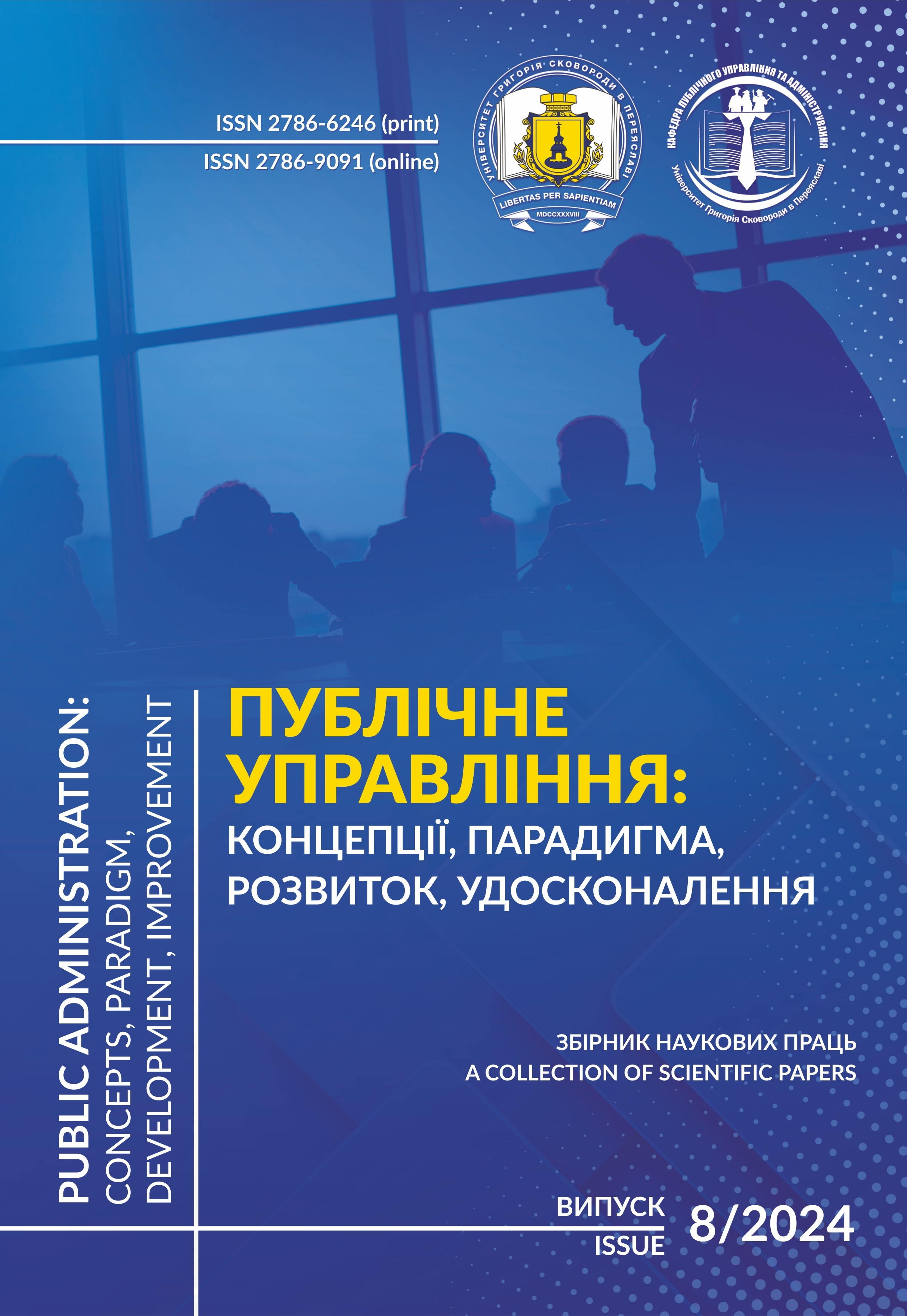CURRENT PROBLEMS OF PUBLIC ADMINISTRATION PROVIDING CYBER SECURITY IN UKRAINE
DOI:
https://doi.org/10.31470/2786-6246-2024-8-28-35Keywords:
public administration, state authorities, local self-government bodies, cyber security, cyber risks, cyber incidents, innovative approaches to cyber security, cyber risk managementAbstract
The article systematizes scientific studies of modern problems of public management of cyber security in Ukraine.
The author states that cybersecurity is the protection of Internet-connected systems such as hardware, software, and databases from cyber threats. This practice is used by individuals, businesses, and the government to prevent unauthorized access to data centers and other computerized systems.
The author draws attention to the fact that threats are constantly evolving, and the landscape of cyber security is constantly changing. The stakes in the banking and financial industry are high, as large sums of money are at stake, and there is the potential for major economic upheaval if banks and other financial systems are compromised. The same applies to the leakage of personal data from state authorities and local governments.
The article highlights the following innovative approaches to cyber security: threat intelligence, machine learning, behavioral analytics, zero trust architecture, risk management.
The main areas of improvement of public management of cyber security in Ukraine are highlighted: the use of modern protective technologies, equipment and complexes, which allow to raise it to the highest level of security; increasing the personnel potential of specialists capable of solving complex technical tasks related to the prevention, limitation and elimination of modern cyber threats, their skills and professionalism; coordinated activity of cyber security entities regarding the prevention, detection and disclosure of cybercrime, computer attacks and cyber terrorism; anticipatory legislative regulation, departmental regulatory legal regulation of the cyber security institute, combating cybercrime and cyberterrorism, elimination of legal gaps in the shortest possible time, in accordance with the needs of law enforcement practice in this area; active use of modern forms, means and methods of operational and investigative activity, operational and investigative measures to ensure the highest level of cyber security and countering cybercrime; using the experience of developed foreign countries in the organization of cyber security, combating cyber threats, combating cyber terrorism and criminal cyber situations; replication and implementation in practical activities of the experience of ensuring cyber security accumulated by various international organizations; creation, development and improvement of organizational and information-analytical service in cyber security subjects; organization of comprehensive scientific research on the problems of cyber security, cybercrime, cyber-attacks and cyber terrorism.
References
Goodall, A. J. (2020). Cyber Security: Law and Practice. Sweet & Maxwell [in English].
Future of the Connected World: Global Action and Recent Progress. Retrieved from https://www3.weforum.org/docs/WEF_Future_of_the_Connected_World_2022.pdf [in English].
AlDaajeh S., Saleous H., Alrabaee S., Barka E., Breitinger F., Choo K.K.R. (2022). The Role of National Cybersecurity Strategies on the Improvement of Cybersecurity Education. Computers and Security, 119, 102754. https://doi.org/10.1016/j.cose.2022.102754 [in English].
Pollini A., Callari T.C., Tedeschi A., Ruscio D., Save L., Chiarugi F., Guerri D. (2022). Leveraging Human Factors in Cybersecurity: An Integrated Methodological Approach. Cognition, Technology and Work, 24(2), 371–390. https://doi.org/10.1007/s10111-021-00683-y [in English].
Michalec O., Milyaeva S., Rashid A. (2022). When the Future Meets the Past: Can Safety and Cyber Security Coexist in Modern Critical Infrastructures? Big Data & Society, 9(1), 205395172211083. https://doi.org/10.1177/20539517221108369 [in English].
Rosado D.G., Santos-Olmo A., Sánchez L.E., Serrano M.A., Blanco C., Mouratidis H., Fernández-Medina E. (2022). Managing Cybersecurity Risks of Cyber-Physical Systems: The MARISMA-CPS Pattern. Computers in Industry, 142, 103715. https://doi.org/10.1016/j. compind.2022.103715 [in English].
Jentzsch N. (2018). State-of-the-Art of the Economics of Cyber-Security and Privacy (IPACSO Deliverable D4.1). https://doi.org/10.2139/ ssrn.2671291 [in English].
McEvoy R., Kowalski S. (2019). Cassandra’s Calling Card: Socio-Technical Risk Analysis and Management in Cyber Security Systems. In: CEUR Workshop Proceedings, 2398, 65–80 [in English].







